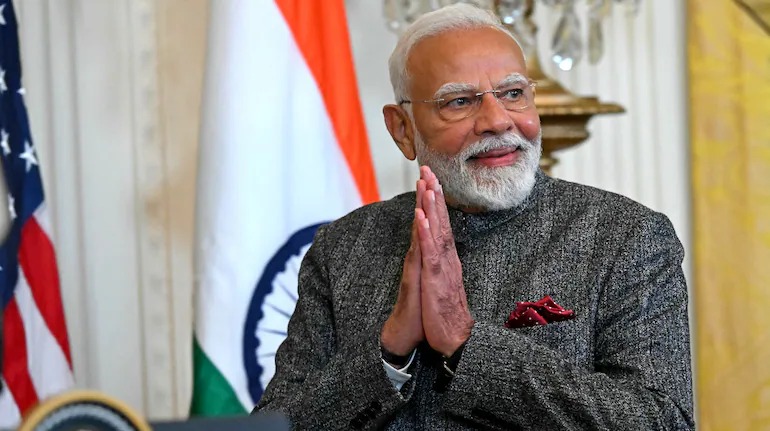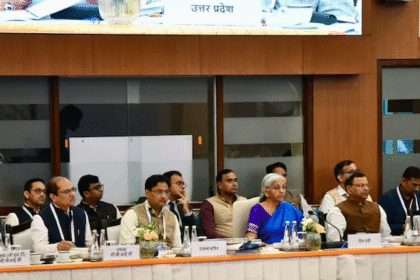Modi Becomes India’s Second-Longest Serving PM, Surpasses Indira Gandhi’s Record
Modi becomes India’s second-longest serving PM as he surpasses Indira Gandhi’s record, marking a historic milestone in Indian political leadership.
A Historic Moment
On July 25, 2025, Prime Minister Narendra Modi surpassed the uninterrupted tenure record previously held by Indira Gandhi, completing 4,078 consecutive days in office—one day more than Gandhi’s historic stretch of 4,077 days, which lasted from January 24, 1966 to March 24, 1977 With this achievement, Modi has become the second longest-serving Prime Minister in Indian history in terms of continuous time in office—just behind Jawaharlal Nehru, who holds the record
2. From Tea Seller to National Leader
Modi’s political journey began in Gujarat, where he served as Chief Minister from 2001 to 2014 before assuming the national leadership in May 2014. His first victory in the Lok Sabha elections that year marked a generational shift in India’s politics and led the BJP to a strong majority. He then won again in 2019 and 2024, becoming just the second leader after Nehru to lead his party to victory in three consecutive national elections
As the leader of both Gujarat and later the national government, Modi has now completed nearly 24 years at the helm of elected administrations—also the longest in Indian history for any leader at state or national level The
3. Unique Distinctions
Narendra Modi is the first Indian Prime Minister born after Independence, the longest-serving Prime Minister from a non-Hindi-speaking state, and the only non-Congress leader to complete two full terms and win twice with majority mandates He also holds the unique distinction among Indian leaders—Prime Ministers or Chief Ministers—of having won six consecutive elections as party leader (three in Gujarat: 2002, 2007, 2012; and three at the national level: 2014, 2019, 2024)
4. Why It Matters
This record setting span of 4,078 days is not merely a statistical footnote. It represents two decades of political continuity, strategic governance, and electoral resilience. It marks a political trajectory that has reshaped Indian governance through economic reforms (e.g. GST, infrastructure, digital transformation), foreign policy reorientation, and a dominant position in parliamentary politics.
Comparatively, Indira Gandhi’s long tenure was marked by both industrialisation efforts and controversial episodes such as the Emergency (1975–77), where civil liberties were suspended Modi’s rule, while also polarized at times, reflects a different era—characterized by majoritarian politics, global assertiveness, and a focus on development narratives.
5. A Leadership Profile
Narendra Modi’s style combines grassroots charisma—rooted in his early life selling tea in Vadnagar—with media-driven public outreach, ranging from digital platforms to mass rallies. His image as a strong, decisive leader has shaped not only national governance but also India’s international posture. He has positioned India as a major interlocutor on global issues—a shift from a historically more cautious foreign policy to a confident global voice.
Summary
- Modi has now completed 4,078 consecutive days in office, surpassing Indira Gandhi’s long-standing record of 4,077 days
- He is firmly established as the second longest-serving Prime Minister in Indian history, trailing only Nehru.
- Modi’s nearly 24‑year tenure as elected head of government at state and national levels is unmatched in modern Indian politics
- His rise reflects a distinct political era—rooted in leadership continuity, electoral success, and governance marked by ambition and transformation.
A Legacy in the Making
Narendra Modi’s political legacy is still unfolding, but its pillars are already clear. His administration has pushed forward a model of governance that blends economic modernisation, religious nationalism, global assertiveness, and welfare populism.
Under his leadership, India launched some of the largest development campaigns in its history:
- Swachh Bharat Abhiyan (Clean India Mission)
- Digital India
- Make in India
- Pradhan Mantri Awas Yojana (PMAY)
- Ayushman Bharat – the world’s largest government-funded health insurance program
- Jal Jeevan Mission – for piped drinking water
At the same time, critics argue that this legacy also includes erosion of institutional checks and balances, weakening of federalism, and the use of state machinery to target political opponents. The dismantling of Article 370, criminalisation of triple talaq, and implementation of the Citizenship Amendment Act (CAA) are deeply polarising milestones that define this era.
7. Governance Model: Centralisation of Power
Modi’s tenure has been defined by an unprecedented centralisation of political power. The Prime Minister’s Office (PMO) has become the command centre of decision-making, often bypassing traditional institutional mechanisms and ministerial autonomy. While this has improved the speed of execution and brought administrative cohesion, it has also raised concerns over lack of internal debate and accountability.
Unlike previous coalitions, Modi’s leadership style has relied on personal charisma and central authority. His dominance in the BJP and government is rarely challenged—something that contrasts sharply with the inner-party culture under Nehru or even Vajpayee.
8. Economic Vision: Reform and Realignment
Economically, Modi’s tenure has seen bold but controversial moves. Demonetisation in 2016 was a dramatic step, aimed at curbing black money but ultimately disrupting the informal economy. The rollout of the Goods and Services Tax (GST)—a long-pending reform—simplified taxation, but also caused initial chaos among small businesses.
The COVID-19 pandemic, followed by global inflation and the Ukraine crisis, tested the economic resilience of Modi’s governance. Despite hardships, India remained one of the fastest-growing major economies—something Modi leveraged to project India as the “engine of global growth.”
The push for a self-reliant India (Aatmanirbhar Bharat) has redefined India’s industrial and trade policy. Whether it boosts long-term growth or hampers competitiveness through protectionism is still debated.
9. Foreign Policy: From Balancing to Boldness
Modi’s foreign policy has moved India from a traditional posture of strategic autonomy to assertive engagement. His embrace of “Neighborhood First,” “Act East,” and “Vishwa Bandhu” (friend to the world) reflects India’s transition to a more confident international player.
His high-visibility visits—whether to the US, UAE, or Australia—have repositioned India as a vital global partner. Modi’s strong relationships with world leaders, including former US Presidents Obama and Trump, and current leaders like Biden, have reinforced India’s diplomatic clout.
The Quad Alliance (India–US–Japan–Australia), firm handling of China post-Galwan, and proactive role in the Russia-Ukraine diplomatic balancing act show Modi’s desire to make India a pole in a multipolar world.
Yet, some critics argue that beyond symbolic optics, actual strategic outcomes—especially in the UN Security Council reform, China containment, or trade deals—remain modest.
10. Society and Polarisation
One of the most debated legacies of Modi’s tenure is the deepening social divide along religious and ideological lines. Supporters view him as a restorer of Hindu civilisational pride; critics accuse his regime of emboldening majoritarianism and undermining secular values.
Mob lynchings, hate speech, and communal clashes have increased, and the government has been criticised for not taking a sufficiently firm stance against rising intolerance. Simultaneously, Modi has been careful to craft a unifying public persona, often invoking India’s plural heritage, yoga diplomacy, and inclusive development slogans like “Sabka Saath, Sabka Vikas.”
11. Political Strategy: Dominance through Narrative Control
Modi has redefined political communication in India. From monthly “Mann ki Baat” radio broadcasts to large-scale social media engagement, his team has maintained an unbroken line of communication with the electorate. His messaging is often direct, emotive, and aimed at connecting with the average citizen rather than the political elite.
He has also mastered the art of turning elections into presidential-style contests, focusing the electorate’s attention on his leadership rather than individual candidates or local issues. This strategy has helped BJP dominate in national elections and remain formidable in many state assemblies.
12. Opposition in Decline, Institutions Under Pressure
The weakening of the Indian opposition—particularly the Congress party—has been a consistent feature of Modi’s era. The BJP’s sweeping victories have often come against fractured or ineffective coalitions. However, this dominance has raised concerns about the health of democracy.
Institutions like the Election Commission, Enforcement Directorate, and media houses have faced accusations of bias or subservience. While such allegations aren’t new in Indian politics, the scale and consistency of these charges under Modi have triggered international concern about democratic backsliding.
13. Comparisons with Indira Gandhi and Jawaharlal Nehru
Indira Gandhi ruled with an iron grip, especially during the Emergency. Her political power was immense, but it came at the cost of democratic norms. Modi’s era draws comparisons, particularly in terms of personal dominance, centralised governance, and ideological imprinting.
However, unlike Gandhi’s command over the Congress old guard, Modi rose as an outsider to Lutyens’ Delhi and rebuilt the BJP into a nationalist force from below.
Compared to Jawaharlal Nehru, who championed democratic institutions, scientific temper, and non-alignment, Modi’s India is more identity-driven, security-centric, and rooted in electoral populism.
Where Nehru stressed consensus, Modi projects conviction. Where Nehru relied on parliamentarians and scholars, Modi relies on technocrats and loyalists.
14. What Lies Ahead
Having achieved the milestone of India’s second-longest uninterrupted tenure, Modi’s eyes are now on legacy consolidation. The push for Uniform Civil Code, One Nation One Election, and constitutional reforms suggests he may seek to recast India’s foundational framework.
But challenges loom:
- Youth unemployment
- Climate crisis
- Social cohesion
- Global geopolitical turbulence
- Dissent and democratic resilience
Whether Modi’s leadership style can adapt to these challenges—or double down on ideological and centralised governance—will determine how history ultimately judges this record-setting reign.
Final Thoughts
As of July 2025, Narendra Modi is not just a long-serving Prime Minister—he is a symbol of a new Indian political order, one that redefines governance, nationalism, and leadership in the 21st century. Loved and loathed in equal measure, his place in Indian history is now secure, but his true legacy remains a story still unfolding.








